Technologies
HP Victus 15: Ultra-Affordable Gaming Laptop for First-Timers
Wait for it to go on sale and the Victus 15 is one of the lowest-cost ways to buy your first gaming laptop.
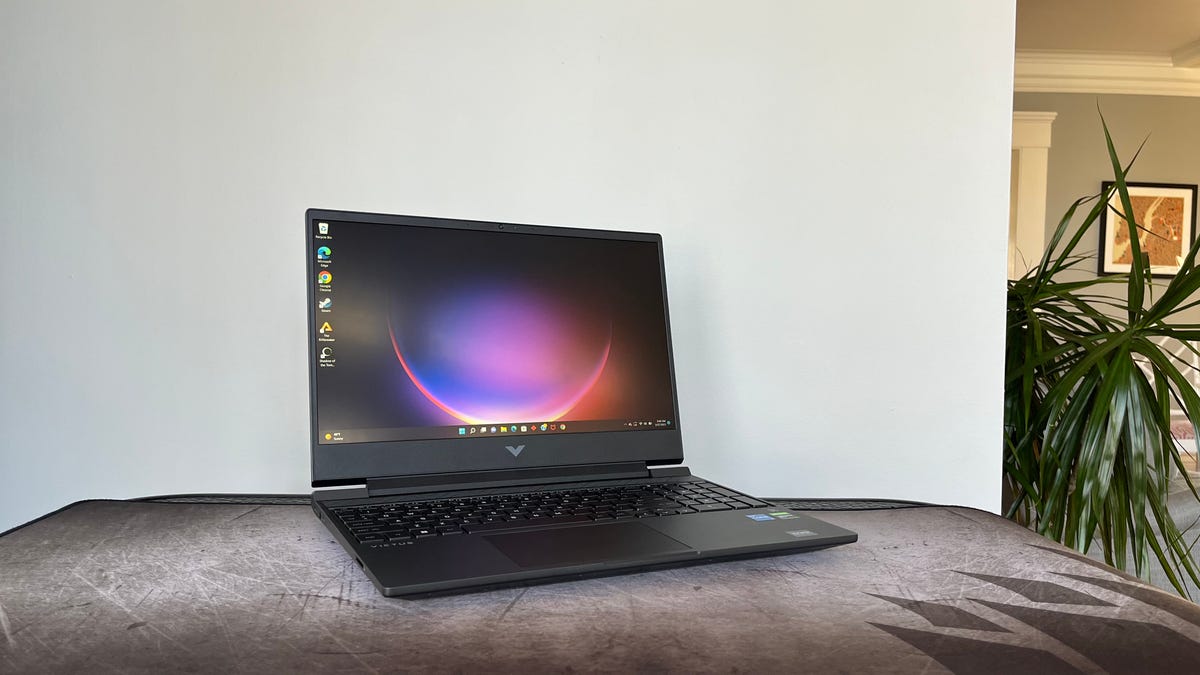
There are two types of budget gaming laptops: Ultralow-cost models well under $1,000 with entry-level Nvidia GeForce GTX graphics and models priced between roughly $1,000 and $1,200 equipped with a low-end GPU from the superior GeForce RTX series. The HP Victus 15 is solidly in the former category. It costs $800 at Best Buy and can frequently be found on sale for as little as $580. It’s based on a 15.6-inch, 1080p display with a 144Hz refresh rate and powered by an Intel Core i5-12450H CPU, 8GB of RAM and GeForce GTX 1650 graphics.
I wouldn’t pay $800 for a laptop with a midrange Core i5 CPU, a meager 8GB of RAM and an aging GTX 1650 GPU because you can usually find a budget model with a better CPU, twice the RAM and — most importantly — an RTX 3050, 3050 Ti or even 3060 GPU on sale for less than $1,000. So, the question becomes, is the Victus 15 a good buy when it’s on sale for less than $600? At that price, it begins to make sense for those just dipping their toes into the 3D-gaming waters and looking to play older or more casual games rather than rocking the latest AAA titles with ray tracing and other quality settings dialed up.
Like
- Ultralow price for gaming laptop
- Speedy 144Hz display
- Decent battery life
Don’t Like
- Dim display
- Grainy 720p webcam
- Keyboard lacks RGB lighting
Enough 3D performance for some
Our Victus 15 test system (model 15-fa0031dx) has been available at Best Buy for nearly a year and is based on an Intel Core i5-12450H CPU and GeForce GTX 1650 graphics. Released at the beginning of last year, the 12th-gen Alder Lake CPU is relatively new. While some high-end, high-priced laptops have been released with 13th-gen Raptor Lake CPUs, we’ve yet to see a lower-end model based on a mainstream 13th-gen Core i5 or Core i7 chip. The Victus 15’s GPU is another story. The GTX 1650 was released nearly four years ago and has been surpassed by three generations of GeForce RTX graphics processors.
The only place you’ll find the GTX 1650 GPU these days is in not just a budget gaming laptop but an entry-level budget gaming laptop. You really can’t drop down a level without entering integrated graphics territory. That said, this four-year-old GPU isn’t entirely useless. While it will struggle with the latest, most demanding AAA titles, it’s more than capable of playing most games at 1080p at medium to high settings.
HP Victus 15 gaming laptop
| Price as reviewed | $800 |
|---|---|
| Display size/resolution | 15.6-inch 1,920×1,080 144MHz 16:9display |
| CPU | 2GHz Intel Core i5-12450H |
| Memory | 8GB DDR4 3,200MHz RAM |
| Graphics | 4GB Nvidia GeForce GTX 1650 Graphics |
| Storage | SamsungMZVL2512HCJQ 512GB SSD |
| Networking | Wi-Fi 6 MT7921 (2×2) and Bluetooth 5.3 |
| Operating system | Windows 11 Home 21H2 |
For casual gamers looking to play around with co-op shooters, the Victus 15 is a cheap way to get there. We experienced smooth gameplay at 1080p on both CS:GO and Riftbreaker. The laptop averaged 105 frames per second on the Riftbreaker GPU benchmark and an even more impressive 191fps on the CS:GO benchmark. Both tests were run at 1080p with High settings enabled. It also achieved a playable 61fps on the newer and more demanding Guardians of the Galaxy — also at 1080p and High settings.
On our Shadow of the Tomb Raider test (1080p with Highest settings), however, it dropped to 46fps. When we dialed back the detail settings to High, the Victus 15 averaged 53fps. It was able to surpass 60fps only when we dropped the settings to Low, where it averaged 73fps. (It got close at Medium settings, with an average frame rate of 58fps.)
Gaming laptops rarely, if ever, deliver long battery life, so all we are looking for from such a machine is a passable runtime. And the Victus 15 delivers just that. It lasted for nearly 6.5 hours on our demanding streaming video battery-drain test, which placed it in the top half of the other budget gaming laptops we are using for comparison in this review. Don’t plan on getting anywhere near that if you’re gaming, though.
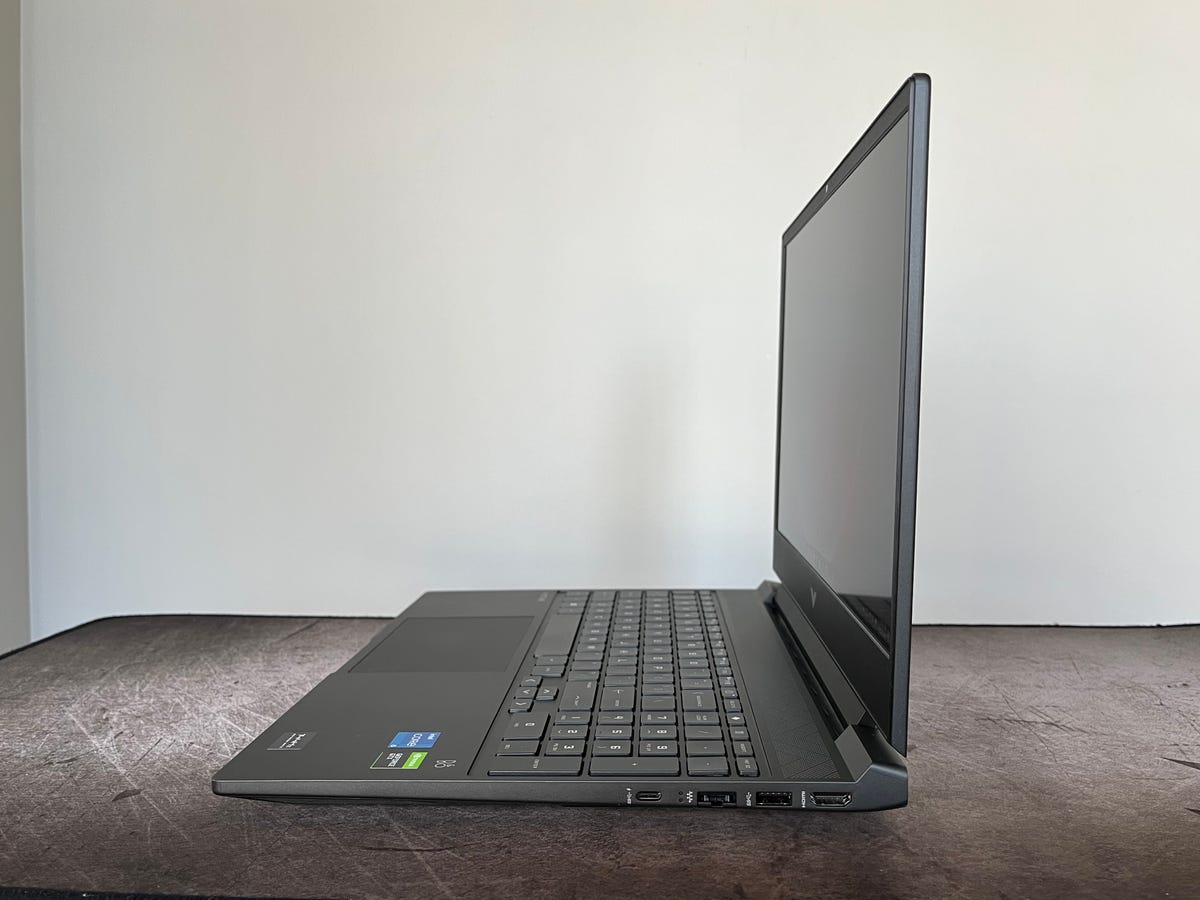

Plastic chassis, dim display
There’s certainly a limit to its 3D performance — not a surprise with an $800 gaming laptop that’s frequently on sale for less than $600. The laptop’s design doesn’t overcome its budget price, either. The all-plastic, all-black body is a bit flimsy but not too bulky. It’s a hair less than an inch thick and weighs just over 5 pounds. The display hinge isn’t quite tight enough, causing the display to wobble at the slightest nudge. Some flex can be felt with the plastic keyboard deck under your fingers when you are typing and particularly when mashing keys during a game. The plastic lid protecting the display also flexes a bit too much for my comfort.


The keyboard feels cramped because HP decided to squeeze in a number pad. The keys have snappy response but lack RGB backlighting, a fun feature offered on nearly every gaming laptop. I wasn’t expecting per-key or even multizone RGB lighting, but the Victus 15 offers neither R nor G nor B — nor any other color than white. You get the bare minimum of keyboard backlight — one-level white lighting.


The display offers a crisp, full-HD image across the 15.6-inch panel along with a speedy 144Hz refresh rate but is rated for only 250 nits of brightness. That’s typical of budget laptops, but I measured a peak brightness of only 220 nits. Games and images looked a bit dull, even at max brightness. The 720p webcam, too, is underwhelming. It produces a grainy, poorly balanced image compared with that of 1080p cams that have quickly become the norm.
Affordable fun for a first gaming laptop
Do you remember your first car? Unless you were born into the 1%, it was likely on the level of a Ford Taurus that could receive a dent or two without your parents getting upset. It’s also likely you recall that dented Taurus fondly. You made great memories in that car, because you and your friends had the ability to cruise around without a parent at the wheel. The Victus 15 is that beloved Ford Taurus. It’s not the sleekest or fastest gaming laptop, but it’s an inexpensive rig that you can afford right now. You could keep saving for a pricier gaming laptop that would deliver greater gaming capabilities and more bells and whistles than the Victus 15, but the Victus 15 will let you start making fond memories online with your friends right now.
The Victus 15 can regularly be found on sale at Best Buy for less than $600. For first-time gamers, it makes sense at this price. If it’s selling at its full price of $800, however, then budget gaming laptops in the form of the Acer Nitro 5 or Dell G15 are better buys. Or you could check out this RTX 3050-based Victus 15 model available directly from HP that is regularly discounted. Each cost less than $1,000 (and can be frequently found discounted closer to $800) and feature RTX 3050 or RTX 3060 graphics for better 3D gaming performance than the Victus 15 and its aging GTX 1650 GPU.
How we test computers
The review process for laptops, desktops, tablets and other computer-like devices consists of two parts: performance testing under controlled conditions in the CNET Labs and extensive hands-on use by our expert reviewers. This includes evaluating a device’s aesthetics, ergonomics and features. A final review verdict is a combination of both objective and subjective judgments.
The list of benchmarking software we use changes over time as the devices we test evolve. The most important core tests we’re currently running on every compatible computer include: Primate Labs Geekbench 5, Cinebench R23, PCMark 10 and 3DMark Fire Strike Ultra.
A more detailed description of each benchmark and how we use it can be found in our How We Test Computers page.
Geekbench 5 (multicore)
Note:
Longer bars indicate better performance
Cinebench R23 (multicore)
Note:
Longer bars indicate better performance
3DMark Wild Life Extreme
Note:
Longer bars indicate better performance
Guardians of the Galaxy (High @1920 x 1080)
Note:
Longer bars indicate better performance
Online streaming battery drain test
Note:
Longer bars indicate better performance
System Configurations
| HP Victus 15 Gaming Laptop | Microsoft Windows 11 Home; 2GHz Intel Core i5-12450H; 8GB DDR4 3,200MHz RAM; 4GB Nvidia GeForce GTX 1650 GPU; 512GB SSD |
|---|---|
| Acer Nitro 5 AN515-58 | Microsoft Windows 11 Home; 2.5GHz Intel Core i5-12500H; 16GB DDR4 3,200MHz RAM; 6GB Nvidia GeForce RTX 3060 GPU; 512GB SSD |
| Dell G15 5520 GSeries | Microsoft Windows 11 Home; 2.5GHz Intel Core i5-12500H; 8GB DDR5 4,800MHz RAM; 4GB Nvidia GeForce RTX 3050 GPU; 256GB SSD |
| Acer Nitro 5 AN517-42 | Microsoft Windows 11 Home; 3.3GHz AMD Ryzen 7 6800H with Radeon Graphics; 16GB DDR5 4,800MHz RAM; 6GB Nvidia GeForce RTX 3060 GPU; 1TB SSD |
| Dell G16 7620 GSeries | Microsoft Windows 11 Home; 2.3GHz Intel Core i7-127000H; 16GB DDR5 4,800MHz RAM; 6GB Nvidia GeForce RTX 3060 GPU; 512GB SSD |
| Lenovo IdeaPad Gaming 3 15ARH7 | Microsoft Windows 11 Home; 3.3GHz AMD Ryzen 5 6600H with Radeon Graphics; 8GB DDR5 4,800MHz RAM; 4GB Nvidia GeForce RTX 3050 GPU; 256GB SSD |
Technologies
The Maker of the $20K Neo Robot Has a Deal for 10,000 of Its Humanoids
The goal is to get the robots working with actual humans in areas such as manufacturing, facility operations and health care.
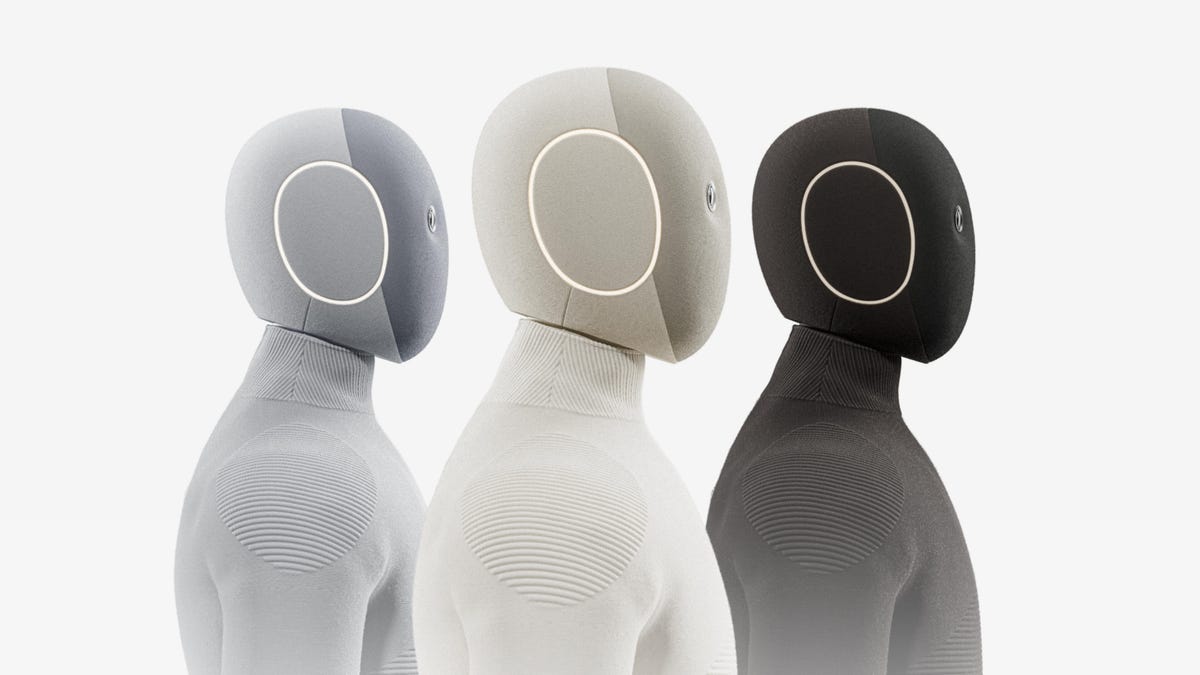
Robot maker 1X made a splash back in October when it opened preorders for its Neo humanoid robot for home use, not least because of its $20,000 price tag. Now it’s making another splash with a deal for up to 10,000 of its humanoids to be deployed over the next five years.
Private equity firm EQT says it will facilitate getting thousands of 1X humanoids into its portfolio companies to work with humans in areas such as manufacturing, facility operations and health care. It’s unclear whether those robots will be from the Neo line itself or a variation. The press release for the EQT deal says that 1X will launch pilots in the US in 2026, which is the same time frame the company gave for getting the first Neo units to customers.
Don’t miss any of our unbiased tech content and lab-based reviews. Add CNET as a preferred Google source.
1X, based in Palo Alto, California, has also worked on industrial robots before introducing Neo. Stockholm-based EQT is an investor in 1X.
Preorders for Neo require a $200 down payment. For those who prefer not to own, a $499-per-month leasing option is available.
Neo stands 5 feet 6 inches tall and can lift 154 pounds. 1X has demonstrated its ability to perform household tasks, such as folding laundry and carrying groceries. Notably, though, in a demo witnessed by a Wall Street Journal reporter, Neo was not autonomous — it required a remote human operator using a VR headset and controllers.
A 1X spokesperson told Bloomberg that the robots will operate autonomously.
Financial terms for the EQT deal weren’t disclosed. 1X and EQT said robots will be deployed to US partner companies first, for purchase or for leasing, and then to those in Europe and Asia.
A representative for 1X did not immediately respond to a request for comment.
A robotic future?
In a release, EQT Ventures said the deal will be part of a wave of mass-market robot adoption and is meant to address issues including labor shortages.
«This isn’t about replacing people, it’s about giving them superpowers,» Ted Persson, lead partner at EQT Ventures, said in a statement. «By making 1X’s technology available to our portfolio companies, we help them tackle labor shortages, improve safety, and unlock new levels of productivity in the industries that keep the world running.»
1X is one of several companies aiming to mass-produce humanoid robots for business, household tasks and even boxing. Amazon is already using robots in its warehouses, and it’s anticipated that AI advances will help speed the rise of robotics across the world.
Unitree, Apptronik, Boston Dynamics and Tesla are among the companies working on human-style robots.
Tesla has been trolled for a recent robot fail: At a public demo in Miami, one of its Optimus robots apparently knocked over bottles it was trying to pick up, then lost its balance and fell.
Technologies
Microsoft Wishes Xbox Game Pass Subscribers a Bloody Christmas With Mortal Kombat 1
«Get over here!» and celebrate the holidays with Scorpion.
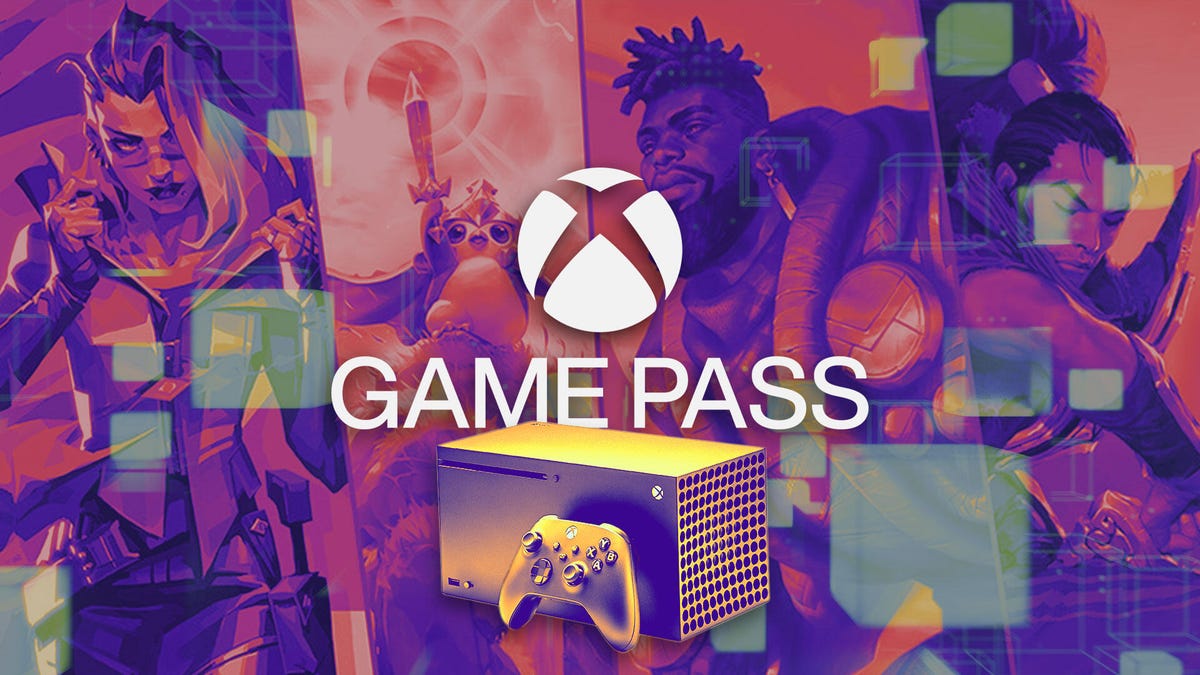
Just in time for the holidays, Microsoft has a new batch of games on Xbox Game Pass. Leading the pack is Mortal Kombat 1, the bloody reboot of the fighting game franchise. It’s the perfect time of the year to sing carols and decapitate some digital heads.
Xbox Game Pass offers hundreds of games you can play on your Xbox Series X, Xbox Series S, Xbox One, Amazon Fire TV, smart TV and PC or mobile device, with prices starting at $10 a month. While all Game Pass tiers offer you a library of games, Game Pass Ultimate ($30 a month) gives you access to the most games, as well as Day 1 games, like Call of Duty: Black Ops 7, added monthly.
Here are all the games subscribers can play on Game Pass. You can also check out other games the company added to the service in November, including The Outer Worlds 2.
Don’t miss any of our unbiased tech content and lab-based reviews. Add CNET as a preferred Google source.
Mortal Kombat 1
Available now for Game Pass Ultimate, Game Pass Premium and PC Game Pass subscribers.
The Mortal Kombat series has gone back to the beginning, sort of. Mortal Kombat 1 is a reboot of the franchise with some changes, such as series protagonist Liu Kang becoming the Fire God who created this new universe. Pick your favorite fighter from the mainstays, including Scorpion, Sub-Zero and Johnny Cage, or splurge a bit and purchase the downloadable characters, including the T-1000 from the Terminator series, Conan the Barbarian or DC Comics’ Peacemaker.
Lost Records: Bloom & Rage
Available now for Game Pass Ultimate, Game Pass Premium and PC Game Pass subscribers.
Lost Records: Bloom & Rage is a narrative adventure game from Don’t Nod, the studio behind Life Is Strange, and follows a group of friends as they uncover long-hidden secrets from a pivotal summer in 1995. Decades later, they reunite to confront the secrets they buried and the fallout that still haunts them.
Monster Train 2
Available now for Game Pass Ultimate, Game Pass Premium and PC Game Pass subscribers.
Monster Train 2 is the sequel to the deck-building roguelike from Shiny Shoe, bringing back strategic card combat with new factions and mechanics. Players once again battle through shifting hellscapes while defending their pyre from invading forces. The sequel expands on the original with deeper customization, more dynamic battles and fresh ways to build powerful decks.
Routine
Available now for Game Pass Ultimate and PC Game Pass subscribers.
Routine is a first-person sci-fi horror game from Lunar Software, finally released after more than a decade in development. Set on an abandoned lunar base, it blends exploration with tense, survival-driven encounters against rogue machines. The game’s long road to launch has made its atmospheric world and polished retro-futuristic design a key part of its appeal.
The Crew Motorfest
Game Pass Ultimate and PC Game Pass subscribers can start playing on Nov. 20.
The Crew Motorfest is a massive car culture festival spanning the Hawaiian islands, featuring races, stunts and open-world driving challenges. The game features more than 700 vehicles, including cars, bikes, boats and planes, letting you pick how you want to explore the islands. Now in its third year of free updates, Motorfest adds new locations, customization options, a race creator tool and NASCAR content.
Death Howl
Available now for Game Pass Ultimate and PC Game Pass subscribers.
Death Howl is a genre‑blending soulslike deckbuilder where players craft tactical decks and face relentless spirits as Ro, a grieving mother on a mythic quest to bring her son back from the dead. You’ll be building decks, dodging deadly spirits and wondering if that creepy forest is watching you back.
Dome Keeper
Game Pass Ultimate, Game Pass Premium and PC Game Pass subscribers can start playing on Nov. 25.
Dome Keeper is a roguelike survival miner from indie studio Bippinbits, where players dig for resources and upgrade their defenses while protecting a glass dome from relentless alien attacks. You’ll still be digging for scraps and blasting alien hordes as you juggle mining for upgrades and zipping back to shore up your dome before it gets wrecked.
Games leaving Game Pass in December
While Microsoft is adding those games to Game Pass, it’s also removing five others from the service this month. So you still have some time to finish your campaign and any side quests before you have to buy these games separately.
On December 15:
On December 31:
For more on Xbox, discover other games available on Game Pass now and check out our hands-on review of the gaming service. You can also learn about recent changes to the Game Pass service.
Technologies
Exodus, the Upcoming Sci-Fi Game, Merges Mass Effect With the Drama of Interstellar
Ahead of The Game Awards, the developers of the action RPG talk about time dilation, romanceable companions and other hard sci-fi effects.
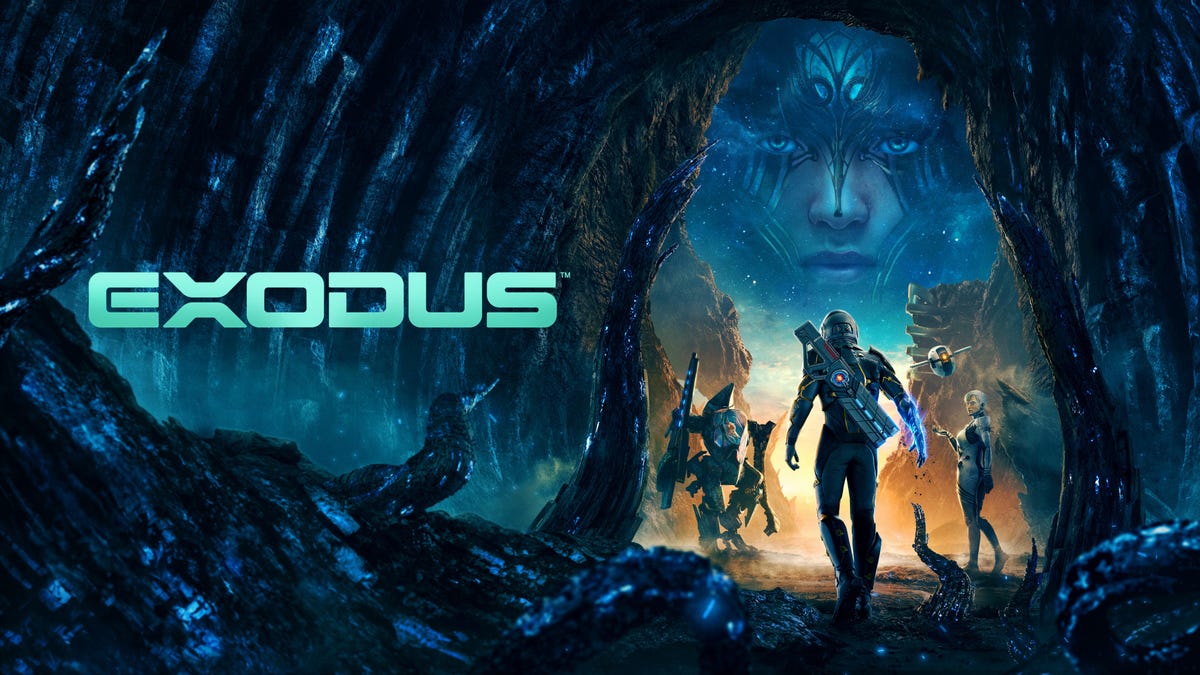
Exodus, the upcoming game made by former BioWare developers who worked on the Mass Effect series, has been a long-awaited follow-up to the venerable action RPG. Now, a new trailer shown off at The Game Awards 2025 on Thursday night introduces the game’s characters, teases the dramatic, star-spanning story, and gives sci-fi gamers what they want most: the news that the game will be released in 2027.
First introduced at The Game Awards two years ago, Exodus will be the debut game from studio Archetype Entertainment, operating under Wizards of the Coast. Early trailers laid the groundwork of the game’s universe, a hard science fiction adventure where travel across the stars can take moments for one person or decades for another. Now that the game is closer to its release, I sat down with Exodus’ developers to chat about what’s in store for their newly revealed hero, Jun. We also chatted about companions, big choices and Matthew McConaughey.
McConaughey, previously confirmed to be in the game, plays a mysterious character named C.C. Orlev, explained Chad Robertson, co-founder and general manager at Archetype. He’s a blend of teacher and voice of the people, meaning players will likely hear a lot from the famed actor during their playthrough as Jun.
«Jun doesn’t really fully understand the origins of how C.C. comes into his life, effectively. And C.C. still serves as a bit of a mentor and advisor to Jun,» Robertson said.
McConaughey’s role in the hard sci-fi film Interstellar thematically aligns with Exodus’ implementation of time dilation — the physics theory that as objects go faster (like a ship approaching the speed of light), time slows down for them. Since there are no wormholes or teleporters in the game’s universe, explained Drew Karpyshyn, narrative director of Exodus at Archetype, players will have to make some tough calls. If they head out on a mission that’s 10 years away and takes 10 years to come back, that’s 20 years passing on the planet they left.
«Everybody’s aged. The world has moved on. Things have changed, and that puts some really interesting opportunities and some really interesting conflicts and dilemmas for the players to deal with, the emotional impact of what happens to the people you leave behind — your friends, your companions, the people you care about,» Karpyshyn said.
Time dilation is just one of the mechanics that sets Exodus apart from other sci-fi games. In Exodus, humanity left an uninhabitable Earth thousands of years ago to find refuge in the Centauri system, but their colony ships staggered in their arrival. The latest humans to make it, like Jun, are met by civilizations that have evolved over the millennia into other humanoids alongside «Awakened animals,» explained Chris King, game director of Exodus at Archetype.
«I think there’s similarities to games we’ve worked on in the past, but there’s a ton of things we’re doing that are pretty different,» King said.
Archetype has leaned heavily on player decisions in Exodus, which isn’t a surprise since its developers were behind the choice-heavy BioWare games. Expect plenty of morally ambiguous choices in the game that won’t make everyone happy, King said. Players will just have to go on Exodus missions — the titular sojourns that leave family and friends behind for years at a time — and see how they play out.
«For us, it’s all about trying to give players as much agency as possible. We think of them as co-authors in the story and experience,» King said. «We’re basically trying to cram in as many choices and consequential gameplay so that they can customize the experience and compare notes with a friend who’s playing the same game. Their experience can be pretty drastically different.»
Unlike the pure good and evil choices of games like Knights of the Old Republic or Mass Effect, Exodus will veer away from a specific alignment system, Karpyshyn said. There will be mechanics in the game that honor and reflect choices, though the developers are trying to avoid the more artificial feel of picking options for, say, goodness points in favor of picking what’s best for their character. Gameplay choices, interactions and how players upgrade their hero will give them a reputation.
Companions also play a big part, and some of them will be romanceable, but not all. In the new trailer, we meet Salt, an Awakened octopus piloting a mech suit who simply isn’t interested in humans like Jun. These companion characters have their own stories and motivations that players can choose to explore, and they won’t always see eye-to-eye with each other.
While we’ll have to wait and see how Archetype incorporates all these sci-fi RPG elements, it’s clear that Mass Effect’s shadow looms large over Exodus. How much the new game resembles its spiritual predecessor will be clarified as more of it is revealed, but a clear divergence lies in inspiration. In addition to Interstellar, Archetype’s developers looked to another iconic sci-fi saga to pattern its new game after: Frank Herbert’s epic Dune novels, which were recently adapted to the screen by Denis Villeneuve.
Archetype took specific inspiration from «the scope and timelines of consequences, the idea of dynasties, family politics, rising up to become a leader and sort of savior of your people,» Karpyshynsaid.
At Archetype’s studio space in Austin, Texas, posters line the walls from films and media that also inspired the game, like Interstellar and Edge of Tomorrow. Other properties, like the Star Wars show The Mandalorian, evoke the desperate fights players will find themselves in in Exodus — outnumbered, outgunned and flanked by a couple of companions. The developers took a page out of Horizon Zero Dawn’s elemental combat, too.
For all that they’re working to step out from Mass Effect’s shadow, the developers acknowledge its impact on fans — and their desire that Exodus rise to a similar place in gamers’ esteem.
«Mass Effect gets brought up pretty frequently for us. We humbly aspire to deliver something that will resonate with fans at the scale of Mass Effect. We’re super excited and confident that what we’re building is going to put us in that direction, but we’ve got to earn that with fans and deliver something that they’re excited about,» Robertson said.
-

 Technologies3 года ago
Technologies3 года agoTech Companies Need to Be Held Accountable for Security, Experts Say
-

 Technologies3 года ago
Technologies3 года agoBest Handheld Game Console in 2023
-

 Technologies3 года ago
Technologies3 года agoTighten Up Your VR Game With the Best Head Straps for Quest 2
-

 Technologies4 года ago
Technologies4 года agoBlack Friday 2021: The best deals on TVs, headphones, kitchenware, and more
-

 Technologies4 года ago
Technologies4 года agoVerum, Wickr and Threema: next generation secured messengers
-

 Technologies4 года ago
Technologies4 года agoGoogle to require vaccinations as Silicon Valley rethinks return-to-office policies
-

 Technologies4 года ago
Technologies4 года agoOlivia Harlan Dekker for Verum Messenger
-

 Technologies4 года ago
Technologies4 года agoiPhone 13 event: How to watch Apple’s big announcement tomorrow

